NewsMore>
Download Center
To mitigate the issue of friction disturbance in the photoelectric tracking system and to improve the stability and precision of the line of sight, a compensation technique known as LuGre-TSMO was employed. The LuGre model was combined with a terminal sliding mode observer (TSMO) in this approach. Specifically, a terminal sliding mode observer was devised based on a novel reaching rate, utilizing the LuGre model as a basis. This design enables the system to achieve secondary compensation for friction. In comparison to the scenario without compensation, the root mean square error of speed tracking was reduced by in average of 65. 38%. Consequently, the accuracy of visual axis stability on the experimental platform was effectively enhanced. The simulation and experimental outcomes demonstrate that the LuGre-TSMO method exhibits the most effective friction compensation effect when compared to the LuGre model method and the terminal sliding mode observer method. Furthermore, it is demonstrated to be both feasible and ffective in the context of the photoelectric tracking system.
In order to restore motion degradation blur of the strap-down guidance infrared seeker, a non-local sparse prior constraint modeling method for infrared images was proposed. By analyzing the infrared motion blur imaging features of the strap-down platform, a non-local sparse prior constraint modeling method based on motion information was proposed in the blind deconvolution framework, which can estimate the motion blur kernel of the image and restore the infrared motion blur image. The result shows that the non-local sparse prior constraint method based on motion information proposed in this paper is highly targeted and can effectively restore infrared motion blurred images with large motion amplitudes. Cumulative probability of blur detection, structural similarity, peak signal-to-noise ratio all show varying degrees of improvement, especially peak signal-to-noise ratio increases by nearly 8%, and the larger the motion amplitude, the more obvious the restoration results. This study lays the foundation for the application of the strap-down guidance infrared imaging system.
In order to meet the needs in thigh-reflecting copper welding and metal 3-D printing in aerospace and new energy vehicle battery manufacturing, a 500 W blue semiconductor laser module based on four 150 W array blue light units was developed by using spatial beam combining and polarization beam combining methods. Spatial beam combining technology has been used to independently compress the spot on the fast and slow axis to eliminate luminescent dead zone. Using polarization beam combining technique, we can successfully combine 4 independent light-emitting arrays into one single beam, increasing power density without deteriorating the beam quality or the divergence angle. In addition, a specific water-cooling system for the blue laser module was designed to meet the stability working condition for various industrial applications. Finally, thanks to the method above with the beam combining efficiency of 81.3%, a 501 W output with power fluctuations less than 0.7%, a fast (slow)-axis divergence angle of 0.4° (0.02°) has been obtained. In the follow-up research, one may expect the development of 4 kW-level high-power blue semiconductor lasers with coupled in optical fiber for output.
In order to solve the problem that communication between unmanned aerial vehicles (UAVs)in formation was susceptible to strong electromagnetic interference, the ultraviolet (UV)signal model was adopted to complete the information interaction of cluster UAVs to achieve the formation and positioning, combining the consistency theory with the wireless UV virtual potential field obstacle avoidance method, so as to make the UAV formation reach the consistency of speed, heading angle and flight attitude when gathering in the air, and to follow the UAVs as the relay node to enhance the probability of discovery by the adjacent UAVs. Improve the accuracy of formation. The wireless UV optical communication collaborative UAV relay assembly and formation method was proposed to achieve the rapid and accurate formation of UAV formation into the desired formation. The results show that the proposed method improves the communication reliability of UAV quadrilateral, pentagonal, and hexagonal formations by 7.69%, 9.41%, and 10.0%, respectively. This study provides some theoretical references for UAV formation assembly methods and inter-aircraft communication in UAV formations.
In order to achieve precise focusing during fundus imaging, an electronically controlled focusing system using dual light wedge split image was designed. A 905 nm near-infrared semiconductor laser was used to form a rectangular sight mark on the retina through a dual light wedge and a rectangular slit. The movement of the sight compensation mirror and the dual light wedge mechanism was realized by motor control, and the displacement correlation between the sight compensation mirror and the dual light wedge was obtained. According to the separation of the rectangular sight mark, the defocus compensation state was real-time feedback, and the control system was guided to move the dual light wedge and the sight compensation mirror to achieve accurate focusing during fundus imaging. The focusing experiment of fundus imaging was conducted on the simulated eye, and the result showed that system can achieve -10 m-1~10 m-1 refractive compensation, and the focusing accuracy was more than 1 m-1. The electronically controlled focusing system using dual light wedge split image has fast focusing speed and high precision, which provides a basis for the development of automatic fundus imaging instruments.
To address the issue that the difficult parameter selection or poor interpretability caused by the existing hyperspectral super-resolution methods rely on manual or data-driven prior, a deep prior regularization-based hyperspectral image super-resolution method was adopted for theoretical analysis and experimental validation. First, a multi-stage feature extraction network based on a deep convolutional neural network was designed to extract spatial and spectral information from the degraded images. Then, the collected spatial-spectral prior features were fed into a transformer-based feature fusion module, where complementary information from the spatial and spectral domains was adaptively extracted to capture the image' s global prior features. Finally, the super-resolution problem of the image was formulated as an optimization problem by inserting deep prior regularization term in the degraded model, the solution of which can be achieved using the alternating direction method of multipliers while minimizing solution complexity. Experimental results show that reconstruction signal-to-noise ratio of this algorithm is 34.16 dB and 29.35 dB when both of the signal-to-noise ratio are 35 dB, which is 2.78 dB and 2.17 dB higher than the suboptimal algorithm, respectively. The reconstructed high-resolution hyperspectral images have high consistency with their inherent structures under the condition of deep prior regularization. This study provides a reference for the combined use of manual and data-driven prior to enhance the spatial resolution of hyperspectral images.
In order to improve the uniformity of the blue light semiconductor laser beam, a mathematical model of the uniform light system was established using Fourier optics theory, and theoretical analysis was conducted. The uniform light system was simulated using software, and a blue light uniform light system based on a microlens array was built. By using this system, a uniform light spot with a uniformity of 87.6% was obtained. The experimental results show that the uniformity of the homogenized spot is not only related to the focal length and aperture of the microlens array sublens, but also to the focal length of the focusing lens. The uniformity of the homogenized light spot obtained by using a Fresnel lens with a focal length of 100 mm is about 9.2% higher than that obtained by a Fresnel lens with a focal length of 80 mm. This study provides theoretical and design ideas for a blue light beam uniform system with high integration and light volume.
The birth of fiber optic technology makes the information transmission speed greatly improved, now we have entered a brand new stage of fiber optic technology application. In this stage, polymer optical fiber as a new type of optical fiber has attracted much attention. Due to the nature of its material, it is softer, lighter and cheaper than silicon fiber. At the same time, polymer fiber is more flexible than silicon fiber in terms of forming and handling, and can be customized for different needs and applications. With continuous improvements in manufacturing and properties, polymer optical fibers show strong potential and multiple applications in both transmission and sensing, such as fiber optic communications, physics research, health monitoring, biomedical and environmental monitoring. The applications of polymer optical fibers in these fields are presented in turn, the prospects of polymer optical fibers in fiber optic communication and sensing applications are summarized, and finally, future research directions are indicated.
In order to investigate the effects of time and temperature changes on blueberries after early decay, hyperspectral imaging technology combined with partial least squares and back-propagation neural network algorithms were used to carry out theoretical analysis and experimental validation, and partial least squares and back-propagation neural networks were used to obtain the time model and the temperature model of blueberry decay, and the modeling effects of these two algorithms were compared. The results show that with the increase of time, the blueberry decay will further deteriorate; along with the increase of temperature, the intensity of blueberry decay gradually increases, the effect of the model established based on the partial least squares method is more suitable for the detection of decayed blueberries, the coefficient of covariance and correlation coefficient of decayed blueberries are 0.131, 0.149, 0.932 and 0.921, respectively, and the error shows that the error is small and correlation tends to be consistent. The model established by partial least squares method can better show the effect of time and temperature on decayed blueberries, which provides a certain reference for the detection of micro-decay on the surface of blueberries.
In order to investigate the effects of adding different mass fractions of copper on copper cobalt alloy composite coatings, a fiber laser was used to prepare copper cobalt alloy composite coatings on 316L stainless steel substrate using laser cladding technology. Theoretical analysis and experimental verification were conducted on copper cobalt alloy composite coatings. The results indicate that, the grain types of copper cobalt alloy composite coatings mainly include dendritic and columnar crystals. When adding a copper based alloy with a mass fraction of 1%, the grain structure of the cladding layer is the densest and the grain size is the smallest. As the copper mass fraction increases, the grain size of the cladding layer gradually increases. When the mass fraction of copper added is 10%, obvious pores and enriched particles appear. The microhardness of the copper cobalt alloy composite coating has been significantly improved compared to the substrate. When adding copper with a mass fraction of 1%, the Vickers hardness of the cladding layer reaches its optimal level, reaching 540.4 HV, which is approximately 1.65 times higher than the average hardness of the substrate. After X-ray diffraction analysis of the copper cobalt alloy composite coating, it was found that, the phases in the composite coating mainly include CoCx, Co0.52Cu0.48, Cr2Fe14C and other phases. After conducting energy spectrum analysis on the copper cobalt alloy composite coating, it was found that elements such as Co, Cu, Fe, and Cr in the composite coating exhibited significant diffusion between the substrate 316L stainless steel and the composite coating. As the mass fraction of copper based alloys increases, the sedimentation phenomenon of Fe and Ni elements becomes more pronounced. As the mass fraction of copper increases, the corrosion resistance of the alloy coating shows a trend of first increasing and then decreasing. The optimal corrosion resistance was obtained at 1% mass fraction. This study has certain significance for expanding the practical application range of copper cobalt alloy composite coatings.
To address the issues of low recognition accuracy, lack of infrared image features, and poor contrast affecting object detection, several improvements to the original YOLOv5 model were proposed. Firstly, an additional prediction feature layer was introduced to enhance the detection capability for small objects in infrared images. Additionally, a coordinate attention mechanism was employed to enhance the extraction of strong features from infrared targets, thereby improving the detection accuracy of the model. Secondly, the feature fusion network was optimized by using a bidirectional feature pyramid network to improve the model's expressive power and reduce redundant computation. Lastly, to tackle the problem of sample imbalance in detection localization and bounding box regression tasks, the focal-EIOU as the loss function was adopted. This accelerates convergence speed and focuses the regression process on high-quality anchor boxes. Experimental results demonstrate that the improved YOLOv5 achieves an accuracy of 85.3% on the FLIR dataset, which is a 4.2% improvement over the original network model. It not only exhibits high detection accuracy but also provides feasibility for deployment on embedded devices.
In order to improve the corrosion resistance of Q235 steel in seawater and to prolong its service life in marine environment, Ni-based/WC composite cladding layer with different mass fraction CeO2 was prepared on Q235 steel by laser cladding technology. The microstructure, microhardness, and electrochemical corrosion properties in NaCl solution (mass fraction of 3.5%) of the coatings were characterized by using scanning electron microscopy, energy dispersive spectroscopy, X-ray diffraction, microhardness tester, and electrochemical workstation, respectively. The results show that the addition of an appropriate amount of CeO2 promoted grain refinement and a uniform distribution of the microstructure, thereby enhancing the hardness and corrosion resistance of the coatings in NaCl solution. When the mass fraction of CeO2 adds reached 1%, the coating exhibites the highest average hardness and the best resistance to seawater corrosion. This study provides a theoretical reference for subsequent laser cladding preparation of coatings resistant to seawater corrosion.
In order to solve the problem of non-contact and non-destructive testing of lubricating oil film coated on metal substrate materials, an all-optical method was adopted to study the related problems based on the principle of intrinsic light intensity absorption. The lubricating oil film of large open gears was taken as an example, specifically, based on the intrinsic light absorption spectrum of the lubricating oil film, the optimal illumination wavelength for detection was determined. Then, the images of oil films with different thicknesses on the metal substrate were detected and analyzed, and the corresponding relationship between oil film thickness and image gray level was established. On this basis, a detection setup was built, and an optimized light source for the optimal wavelength and a charge-coupled device (CCD) were used as the illumination device and acquisition device respectively to carry out image acquisition experiments to verify the detection capability of the technology proposed in this paper. The method proposed in this paper can provide technical support for monitoring the status of large open gear lubricating oil film, and can also provide a feasible technical reference for detecting the thickness of solid adherent oil film.
In order to improve the accuracy of visible-near infrared (VNIR) hyperspectral peanut image classification and to reduce the computing time of classification detection, a classification detection model based on successive projection algorithm (SPA) fused with particle swarm optimization back propagation(PSO-BP) neural network was proposed. A hyperspectral imaging system was used to acquire VNIR spectral data of seven peanut species samples and conducts background segmentation and extraction of spectral information. After removing the wavelengths that were highly affected by noise and stray light, the wavelengths in the range of 400 nm~900 nm were preprocessed by using Savitzky-Golay convolutional smoothing. The SPA was used to reduce the dimensionality, and 25 characteristic wavelengths were selected by virtue of the root mean square error values. The PSO was also used to optimize the initial weights and thresholds of the BP neural network, and the PSO-BP model was constructed as a classifier for the experiments, and a recognition accuracy of 98.7%, a kappa coefficient of 0.98, and a miss error of 3 for the test set were obtained. The results demonstrate that the accuracy of the model is improved by 2.1%, 8.6%, 3.9%, and 4.3%, respectively, compared with the classification models constructed by the four comparison methods. The proposed method has good application prospects in peanut variety classification based on hyperspectral imaging technology, and provides a new idea for high accuracy and fast nondestructive classification of peanut varieties.
In order to investigate the influence of laser process on the cleaning quality of oil contamination layer on the surface of steel parts, a laser decontamination cleaning test was carried out on a Q235 steel plate specimen by using a pulsed laser, and the cleaning quality and damage of the specimen surface were detected. The mechanism and effect of the laser beam on the oil contamination layer and substrate steel in the cleaning process were theoretically analyzed, a laser thermal effect model was established, and the influence of the degree of defocusing on the surface temperature of the substrate through simulation calculation and test were analyzed. The removal effect of oil contamination on the surface of Q235 steel parts and the damage effect on the surface of steel parts under different defocusing degree in the laser cleaning process were respectively verified by the test. The results show that the optimal process parameters of laser cleaning of oil contamination layer on the surface of Q235 steel parts is that the defocusing degree is 5 mm, and the average power is 4 W. The influence of defocusing degree on the cleaning effect is much bigger than that of the laser power factor. This study provides some reference for the oil treatment process and laser cleaning of metal surfaces.
In order to study the influence of the modulation method of the optical feedback effect of the microchip laser on the optical sensitivity of the laser, a method of driving piezoelectric transducer (PZT) with different modulation voltages and frequencies was used to tune the external cavity of the microchip laser, and the changes of the amplitude and sensitivity of the optical feedback fringe were observed. Numerical simulation and analysis based on the composite cavity equivalent model were conducted. The results show that by increasing the PZT modulation frequency so that it is closer to the relaxation oscillation frequency of the laser, the optical amplification effect becomes more obvious, and the output amplitude and PZT modulation frequency have the same trend. The PZT modulation frequency remains unchanged, and the 140 mA pump current is reduced to the light emission threshold current of about 100 mA, the relaxation oscillation peak will gradually approach the PZT frequency shift modulation amount, which can actively amplify the feedback light, and the gain can be as high as 105. The optical sensitivity is related to the distance between the PZT frequency shift amount and the relaxation oscillation peak. The closer the two are, the stronger the optical sensitivity is. The laser feedback system modulated by PZT has the advantages of lower cost and easy adjustment compared with acousto-optic modulation. This study provides a reference for jointly adjusting the pump current and PZT modulation amount to obtain optical feedback stripes with appropriate amplitude and low noise.
Near-infrared diffusion correlation spectroscopy (DCS) is a relatively new method widely used for blood flow detection because deep biological tissues can be penetrated by near-infrared light, which has a low absorption coefficient and strong penetrating ability. The DCS technique differed from traditional biological sample detection techniques in that it used the time-averaged intensity autocorrelation function of fluctuating diffuse reflectance signals to detect blood flow within tissues, which could achieve non-destructive and continuous quantitative detection of biological samples. In response to the problems of low computational efficiency, high system price, cumbersome operation and application limitations of the current DCS detection system by hardware technology for scattered spot attenuation calculation, a near-infrared diffusion correlation spectrum detection system based on software was proposed and designed. Considering the light source requirement for correlation, a single longitudinal mode laser was used as the light source for this system, a single photon detector was used to detect the scattered light signal, and the signal was transmitted by the digital signal acquisition module, and the calculation of normalized autocorrelation for dynamic scattered light spot intensity was performed by the software. The experimental results show that the time-averaged intensity autocorrelation function of the fluctuating diffuse reflectance signals obtained from the detection of biological samples by the system is in accordance with the theory, which verifies the reliability of the detection function of the system; in terms of objective evaluation indexes, the system successfully discriminates between different biological samples and is able to separate biological samples of the same species with a difference in volume fraction of 1%. The system can monitor the overall optical and dynamic characteristics of biological samples in real-time and is characterized by small size, low cost, good flexibility, and strong expandability, which provides a new solution for the development of a lightweight DCS detection system.
In order to further optimize the performance of miniaturized lasers, based on general principles, an all fiber laser housing structure with output power greater than 10 W and high stability at 1030 nm was designed for miniaturization. The shell volume was 220 mm×270 mm×75 mm, and the mass was less than 7 kg. The shell structure adopted a flexible support vibration reduction design, and could maintain normal operation of the laser on a miniaturized platform with temperatures ranging from -55℃ to 45℃. Thermal analysis and random vibration analysis were conducted on the laser casing using finite-element analysis software. The miniaturized all fiber laser prototype was processed according to the design drawings and experimentally verified. The results indicate that, at a temperature of 45℃, the hottest surface temperature of the laser is 49.5℃, with a temperature rise of about 4.5℃, indicating good heat dissipation performance. Under the random vibration condition of power spectrum density total root mean square 10.77 g, maximum of 3σ stress of the laser is 171 MPa, and the root mean square value of the random vibration response is only 24.5 g, indicating good mechanical properties of the shell structure. The heat dissipation and mechanical properties of the laser shell structure fully meet the design requirements, and the experimental results are in good agreement with the simulation results. This study provides a certain reference for the specific implementation of miniaturized fiber laser projects.
In order to solve the online detection of laser welding depth of fusion and to solve the problem of optical coherence tomography (OCT) depth of fusion detection signal noise, a percentile filtering plus moving average algorithm was used to fit the weld depth curve. The weld depth of 304 stainless steel keyhole welding process was detected online by optical coherence photomicrographic imaging system, in the process of extracting the percentile depth curves from the original scatter data using percentile filtering; it was found that there were spikes interfering noises in the percentile depth melting curves extracted by this method, and the percentile depth curves were processed by low-pass filtering through the moving average algorithm, and the OCT weld depth curves were finally extracted and fitted from the original scatter data. The results show that, comparing the OCT weld depth curve with the actual weld depth curve on the longitudinal surface of the weld, the measurement accuracy of the OCT depth of fusion curve obtained by this method has been improved by 15% at most. The method is effective in extracting and fitting more accurate OCT weld depth curves from the original scatter data.
In order to solve the problem of low generality of traditional machine tool fixtures, errors and low efficiency caused by multiple tool settings and installation, an improvement scheme of machine tool clamping based on point cloud reverse modeling technology is proposed. By installing a laser scanner on both sides of the fixture to obtain the 3-D point cloud information of the workpiece and the fixture, the curvature discrimination algorithm and iterative closest point algorithm based on particle swarm search were used to denoise and coordinate registration, and the 3-D space coordinates of the workpiece and the machine tool were established. Finally, the offset between the space coordinate system and the machine coordinate system was calculated according to the point cloud coordinate of the reference point, and the offset value was entered into the computerized numerical control system for machining. The experimental results show that the improved fixture can effectively reduce the number of tool settings and clamping, and the overall efficiency is increased by about 30%. The research has a certain reference value for improving the processing efficiency of parts with more machining surfaces and more complicated processes.
In order to obtain the thermal response and melting through characteristics of materials irradiated by high energy laser with airflow environment in field of laser processing and other applications, a physical model considering the mechanisms of heat conduction, convective heat transfer, melting and ablation was constructed by using the approximation of plane heat source and unsteady method. The model was validated by experiments and was used for evaluating quantitatively the thermal responses of material. Then, the temperature rise and penetration law of aluminum alloy plates subjected to different laser power density in airflow were obtained. The results indicate that the melting through time decreases sharply with the increase of laser power density under the same target parameters. And the calculated melting through time is consistent with the results by using the gasification ablation model of thermal balance integration method in the literature. The analysis of perforation time under different conditions shows that the airflow factor has a significant influence on laser ablation melting through when the laser power density is small (approximately around 500 W/cm2). When the laser power density is large (above 1500 W/cm2), the effect of airflow through convective heat transfer is insignificant. In addition, the physical model considered in calculation is close to the actual physical process. Above calculation results and analytical understanding provide a quantitative basis for simplifying reasonably the laser ablation models.
In order to explore how to better apply the simultaneous localization and mapping (SLAM) 3-D laser scanning technology to the preservation of historical buildings and realize the purpose of digital preservation of historical buildings by using 3-D point cloud models, the historical buildings of the Bai ethnic group in Yunnan were taken as the research object, and SLAM 3-D laser scanning technology was used to obtain high-precision point cloud models of historical buildings. This technology can not only quickly complete the data collection work, improve the efficiency of the digital preservation of historical buildings, but also form rich digital achievements of historical buildings. Through the theoretical analysis and experimental verification of the experimental area data, the feasibility of SLAM 3-D laser scanning technology in the digital protection of historical buildings was proved. The results show that the error in distance is 0.004 m, and the error in point is 0.037 m and 0.021 m, and SLAM 3-D laser scanning technology can not only quickly and accurately complete the historical building data collection process and form a high-precision point cloud model, but also the flat vertical section extracted based on the model can meet the relevant specification accuracy requirements. This study provides a new idea and method for the digital preservation of historic buildings, which is expected to play a more active role in future applications.
About Journal
《LASER TECHNOLOGY》
(bi-monthly, 1971)
Supervisor:Southwest Institute of Technical Physics, China
Editor:Editorial Board of Laser Technology.
Publisher:Editorial Board of Laser Technology.
Editor-in-chief:WANG YOU
Associate Editor:LU JIAN, ZHANG GUOQUAN,ZHENG YONGCHAO
Editorial Director:GAO JUN
Address:No. 7, Section 4, Renmin South Road, Chengdu, Sichuan Province, China
Postcode:610041
Website:http://www.jgjs.net.cn
Tel:028-68011091/68011046
E-mail: jgjs@vip.163.com jgjs@sina.com
ISSN 1001-3806 CN 51-1125/TN
Main column
- Overview and Commentary
- Frontier Technology of Photonics
- Semiconductor Optoelectronic Technology
- Laser Physics, Materials, and Devices
- Application of Laser and Optoelectronic Technology
- Optical Communication and Optical Information Technology
- Photobiology and Medical Photonics
- Optoelectronic Countermeasures and High Power Laser Technology
- Newsletter

 Map
Map
 WeChat
WeChat Email alert
Email alert RSS
RSS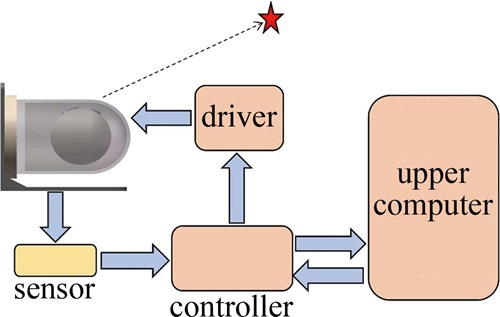


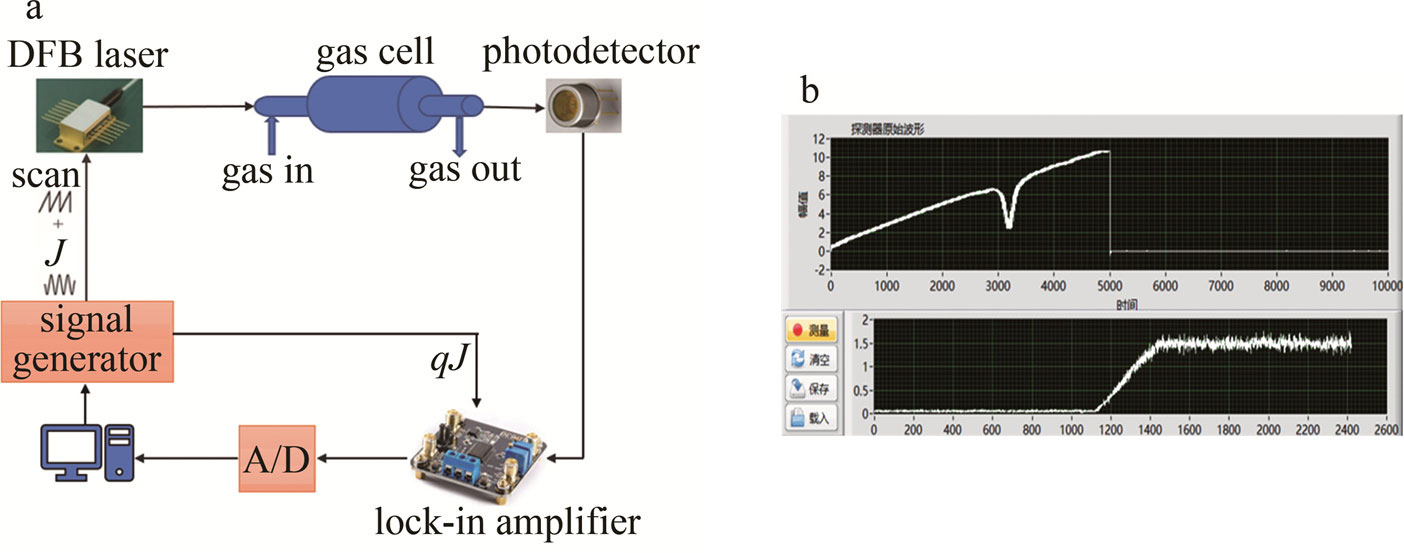


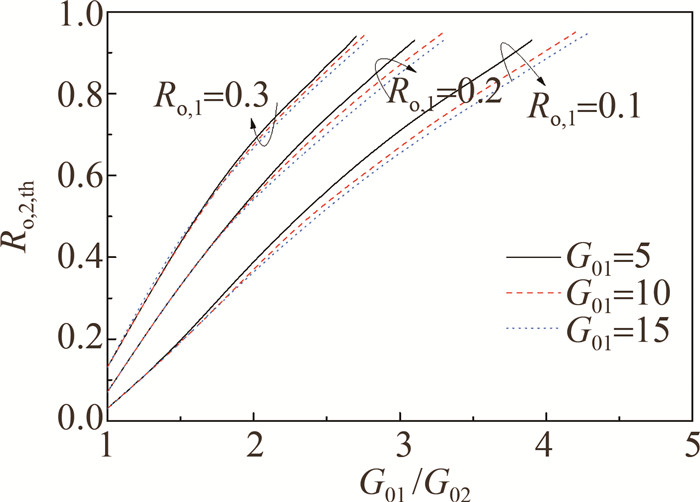
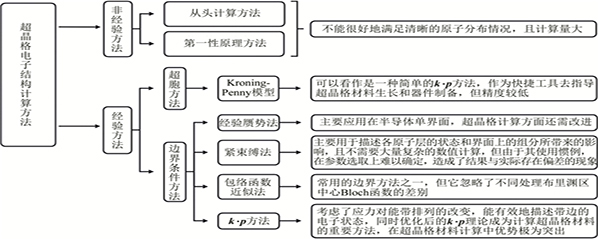
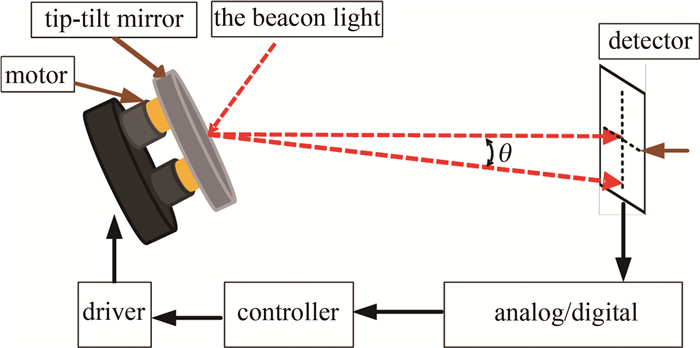

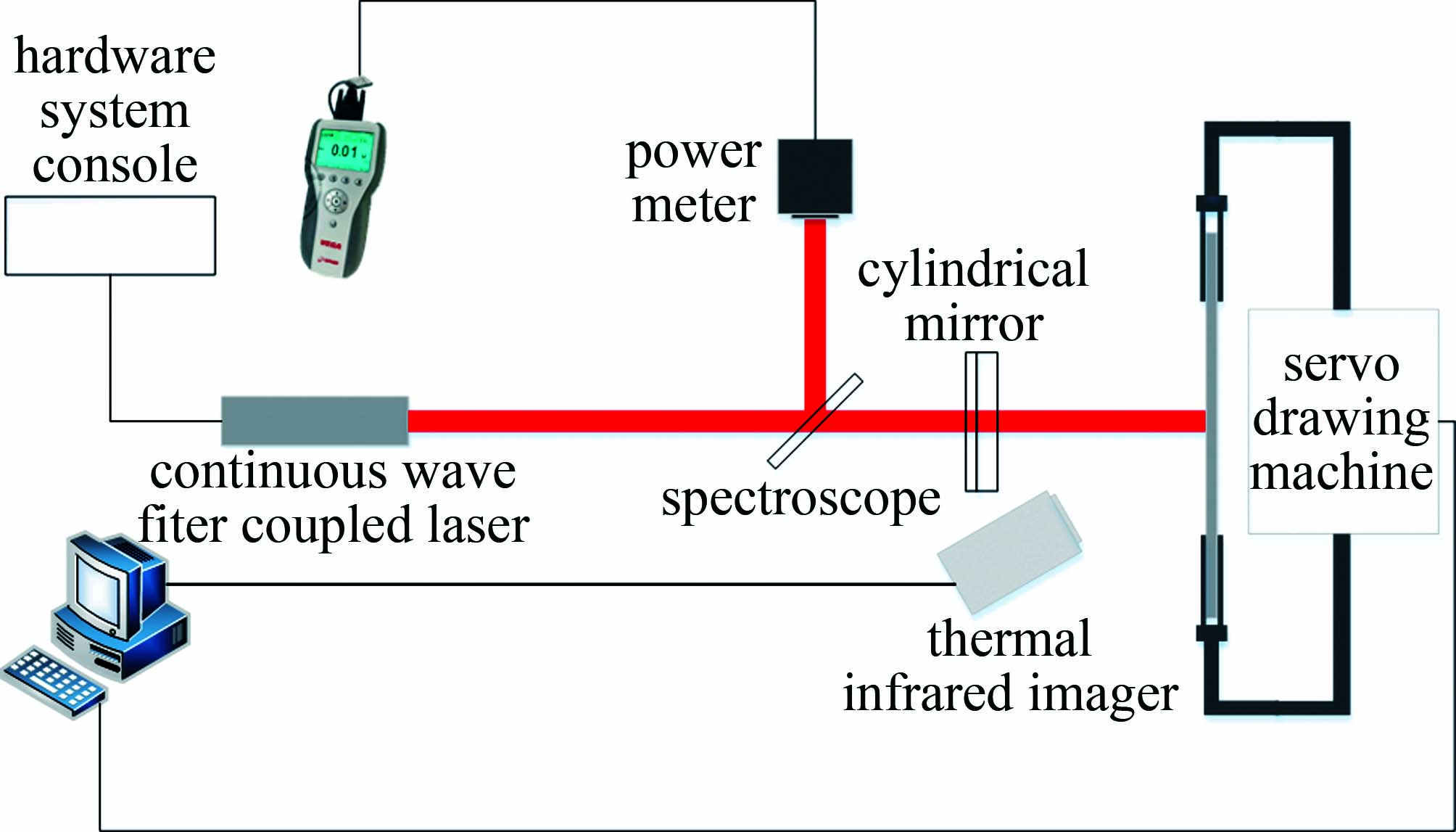


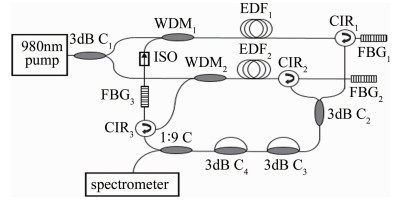

 [Abstract]
[Abstract] [PDF 263KB]
[PDF 263KB] [FullText HTML]
[FullText HTML]